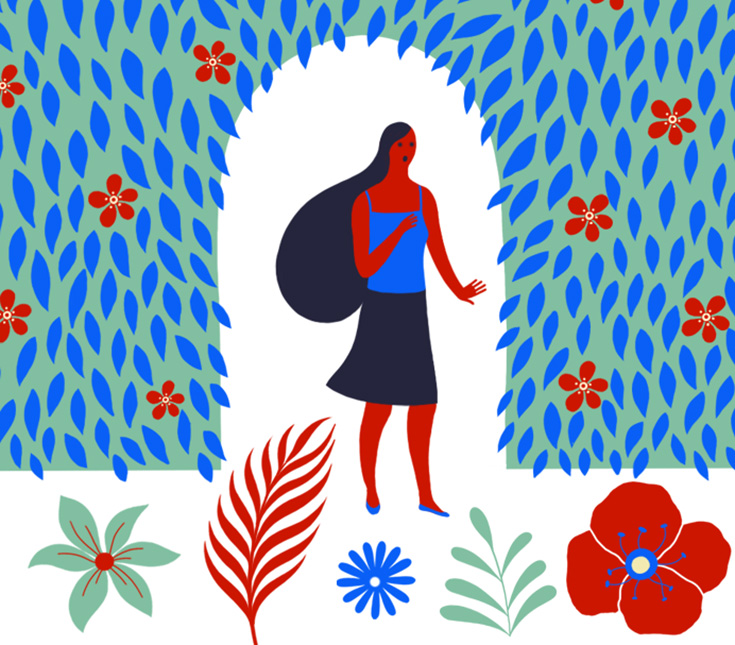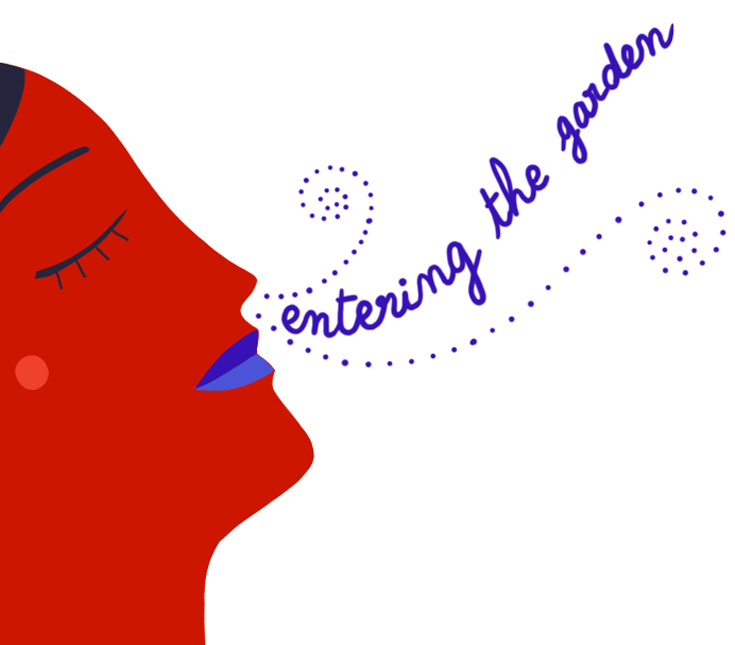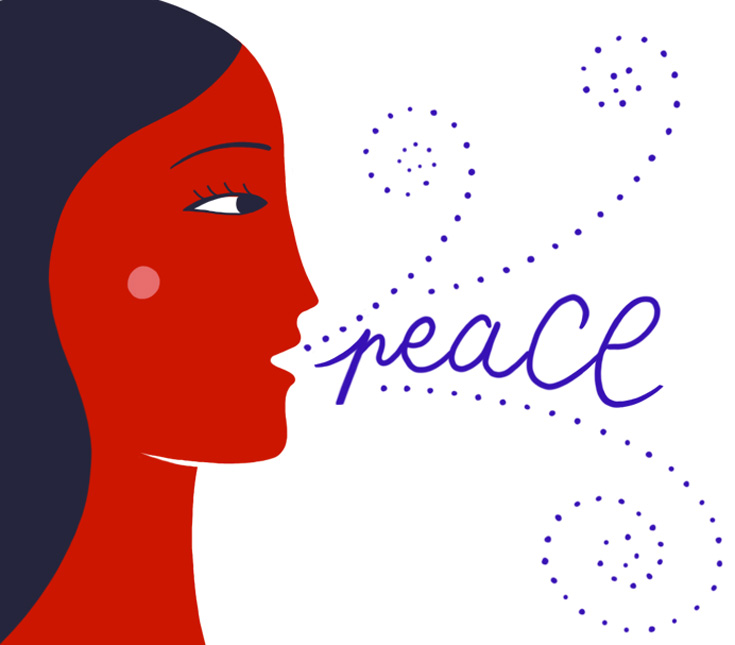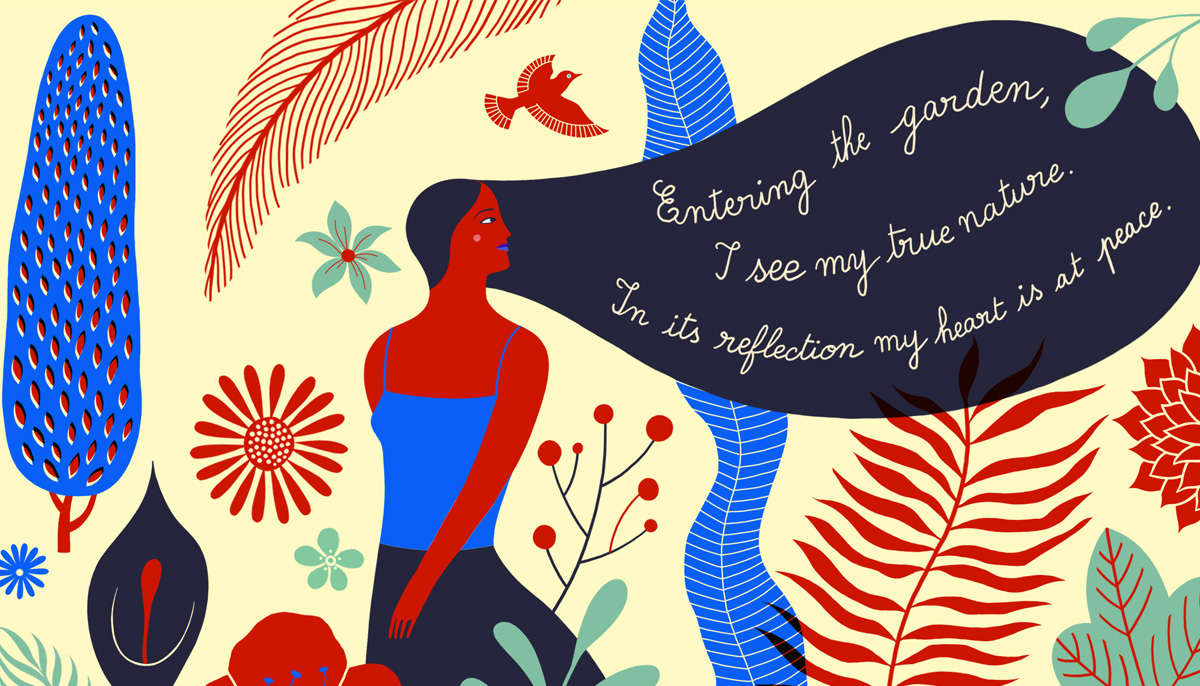Gathas are short verses that call us to the present moment. Reciting gathas is a good way to meditate while engaged in any activity, be it sacred or mundane. Joining the breath, the mind, and the activity of the body, the practice invites us into a deep, direct experience of our environment and our self. Dwelling in the present moment in this way, deeply aware of the action we are engaged in, we can develop greater understanding and love.
The word gatha is related to the Sanskrit term for “song” or “verse.” Gathas originated around 1300 BCE as metrical forms of Indo-Iranian religious poetry. Written by the Iranian poet and prophet Zoroaster, a text of hymns called Gathas was placed at the center of Zoroastrian scripture and tradition as a form of reflective spiritual practice. Scholars believe that as Buddhism spread eastward from India, it was influenced by Zoroastrian traditions, and gathas developed in various streams of Buddhism.
Gathas invite us into greater understanding and love through their practice.
The contemporary recitation of gathas has been popularized by Zen teacher Thich Nhat Hanh. In his tradition, a gatha is a verse recited, usually mentally, not aloud, in rhythm with the breath. This is a mindfulness practice we can perform in daily life, or as a part of formal meditation or meditative study. Rich with wordplay and intentional ambiguities, these gathas are intended to awaken the innate inner wisdom of the practitioner, spurring her toward enlightenment.
As a meditative tool, gathas have a close and parallel relative—mantra. A mantra is a sacred word or sound—usually in Sanskrit—that’s repeated, either aloud or in silence, to deepen one’s concentration in meditation. As such, a single mantra may be used while performing many different activities or as a form of meditation itself. Gathas distinguish themselves from mantras in that each gatha is deeply intertwined with a single activity, drawing the practitioner deeply into the flow and feel of the specific action being performed. Ultimately, both gathas and mantras invite us into greater understanding and love through their practice.
If we bring our sincere attention to it, any activity can cultivate awakening to our true nature, our basic goodness. That’s why gathas, which help us bring attention to the present moment, can be used when performing any type of activity—waking up in the morning, brushing our teeth, taking out the garbage, entering the meditation hall, or inviting the bell.
No matter what activity we’re engaging in, or the particular words of the gatha we’re reciting, the practice is always similar. To serve as an example, here’s how we can practice with a gatha for entering a garden—for the moment we cross the threshold from “inside” to “outside.” The crossing of this threshold gives us just enough space to come back to ourselves. We arrive.

Step One: Recite the Gatha
We stop at the threshold of the garden, becoming aware of the in-breath and the out-breath. We observe the beauty of the environment around us and create an internal pause by reciting—silently or out loud—the entire gatha:
Entering the garden,
I see my true nature.
In its reflection
My heart is at peace.

We allow the meaning to touch our awareness.
Step Two: Synchronize with the Breath
A gatha is intended to be practiced in alignment with the breath. Once we have a feel for the gatha, we can correlate each line with an in-breath or an out-breath.
As we say or think, “Entering the garden,” we breathe in, bringing our full awareness to the moment of our arrival.
Next, we say or think, “I see my true nature,” while we breathe out, entering a direct communion with all of nature and inviting a deeper understanding of our true self.
Then we say or think, “In its reflection,” as we breathe in, seeing the beauty and magnificence of nature as a mirror of our own beauty and connection with all of life.
Finally, as we say or think, “My heart is at peace,” we breathe out, peaceful and alive in the present moment.

Step Three: Shorten the Gatha
After we have practiced with the gatha a number of times and have internalized it, we can shorten it. For example, breathing in, we say or think, “Entering.” Breathing out, we say or think, “Nature.” Breathing in, we say or think, “Reflection,” and lastly, breathing out, we say or think, “Peace.” When we have truly internalized a gatha, just a few words will be enough to remind us of the whole.
Many wonderful gathas have been created by Buddhist teachers, and we can benefit from their wisdom. Thich Nhat Hanh’s gatha for greeting someone is “A lotus for you, a Buddha-to-be.” His gatha for washing our hands is “Water flows over these hands. May I use them skillfully to preserve our precious planet.” More gathas by Thich Nhat Hanh can be found in his book Chanting from the Heart: Buddhist Ceremonies and Daily Practices.
Touching what’s real and alive in each moment ultimately returns us to our authentic self.
To personalize our practice with gathas and nourish the expression of our true nature, we can compose our own gathas inspired by our daily experiences and observations. To do this, we choose an activity that we regularly perform, create and memorize a gatha for it, and recite the gatha each time we do that particular activity. The personal nature of gathas created from our own insights deepens our practice and has the potential not only to develop our mindfulness and compassion, but also to water the seeds of compassion and love in those with whom we come into contact.
As meditation in motion, gathas loosen the tangle of our thoughts, opening us to experience the present moment. They help us deepen our understanding of our connection and belonging with all of life as we mindfully engage in the activity before us. When the mind drops into the heart and joins in communion with the breath and our actions, we see life as it is and ourselves as an integral part of it. Touching what’s real and alive in each moment ultimately returns us to our authentic self. Grounded in our essential nature, we can offer our joy, peace, and love to all beings around us. This gift, the gift of our self when expressed in this way, is perhaps the greatest gift ever.
